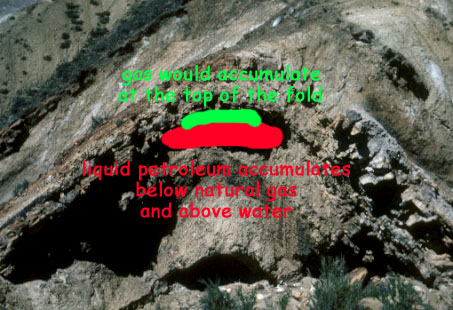|
As the petroleum is formed at the bottom of the sea, it sits on an impermeable layer of silt and sand. Since it is lighter than water, it will float to the top. This migration of petroleum allows it to contact porous rock. The liquid petroleum can now flow through the porous rock and accumulate in a structural trap (Instructional).

|
| http://www-class.unl.edu/geol101i/09_structural.htm |
Petroleum and natural gas climb up the rock and become trapped at the top, at the fold axis. Gas is lighter than petroleum and accumulates at the very top (Instructional).
----------------------------------------------------------- |




